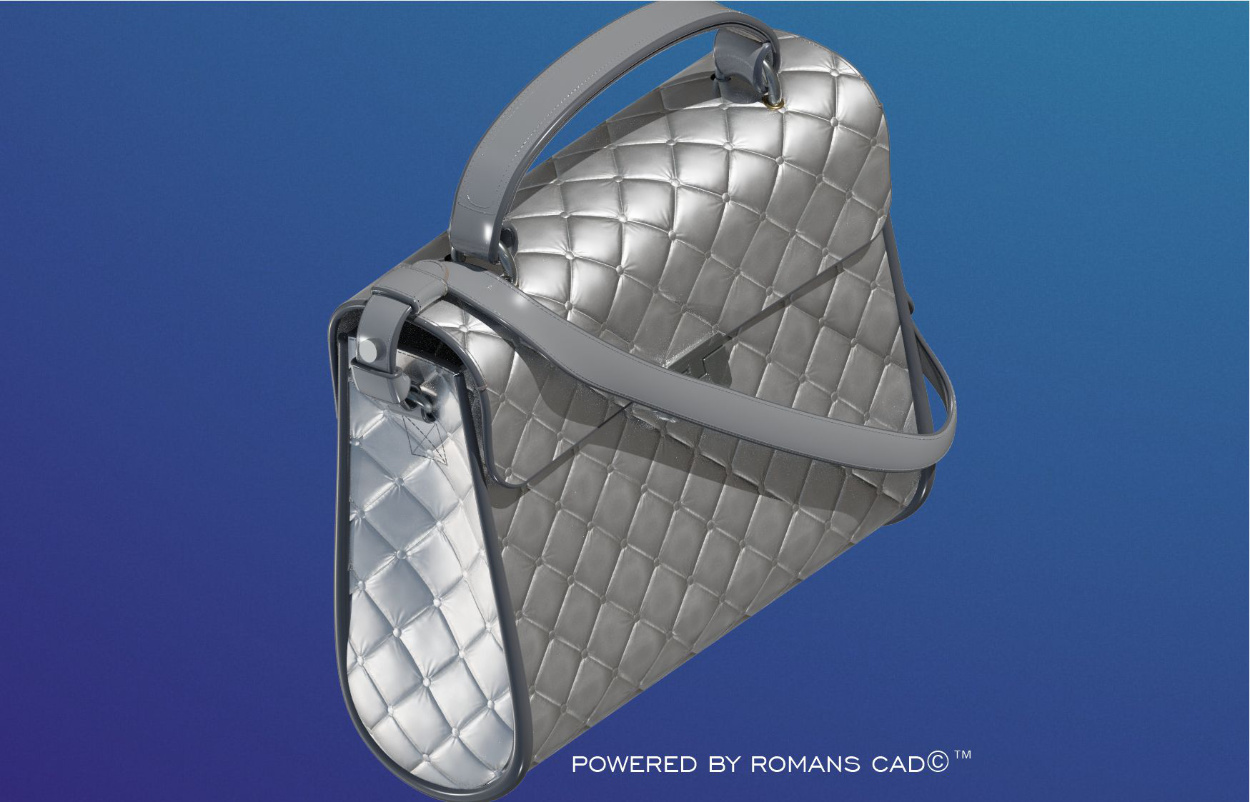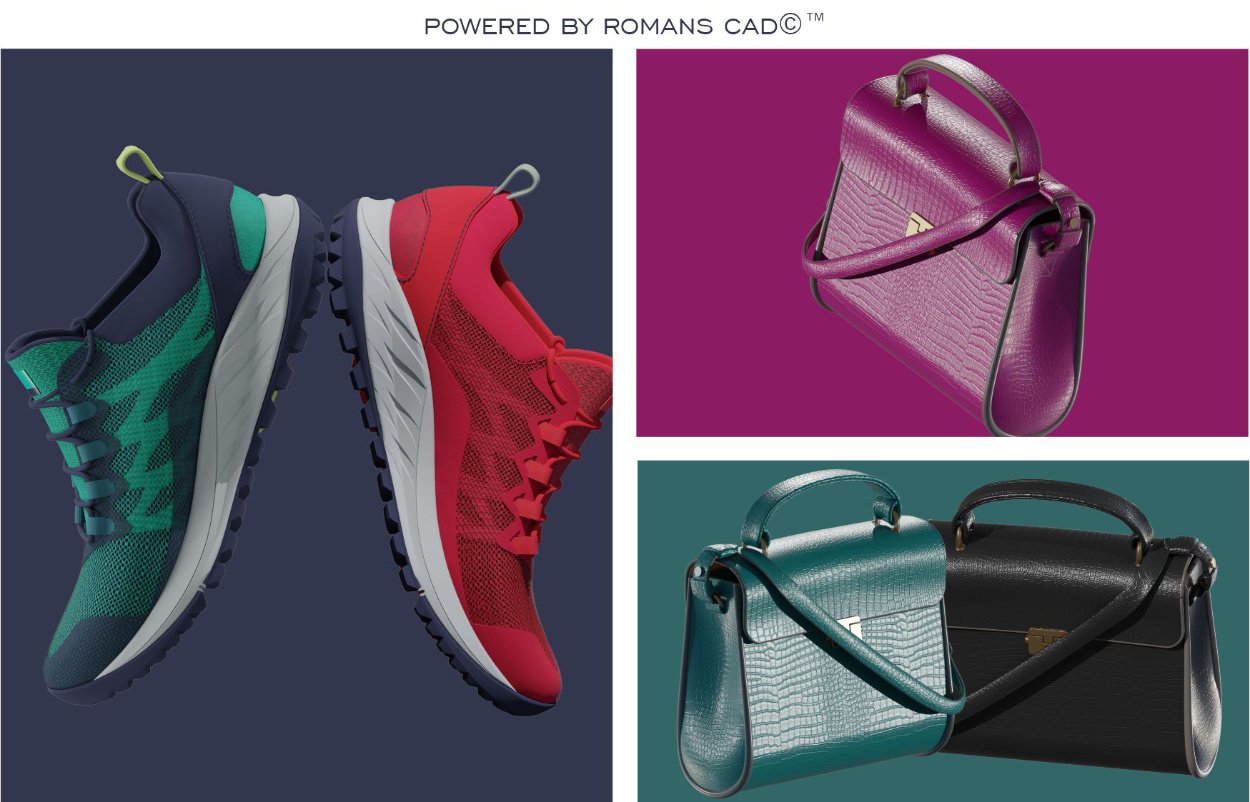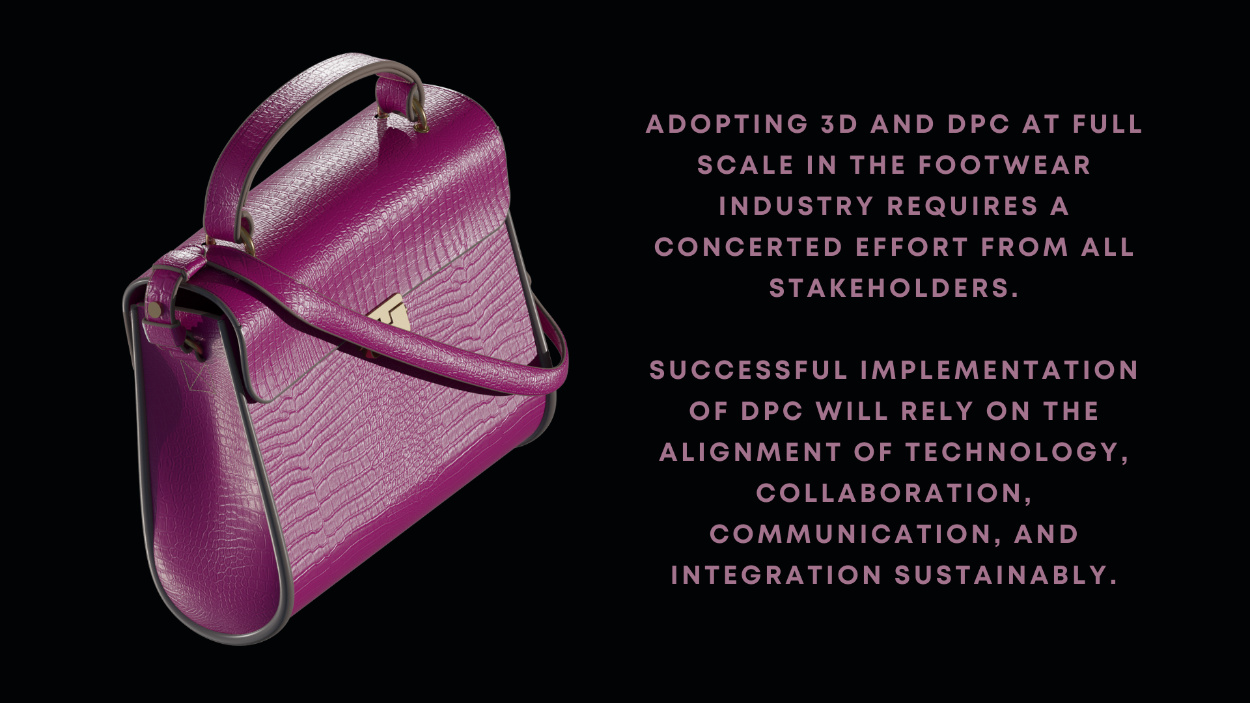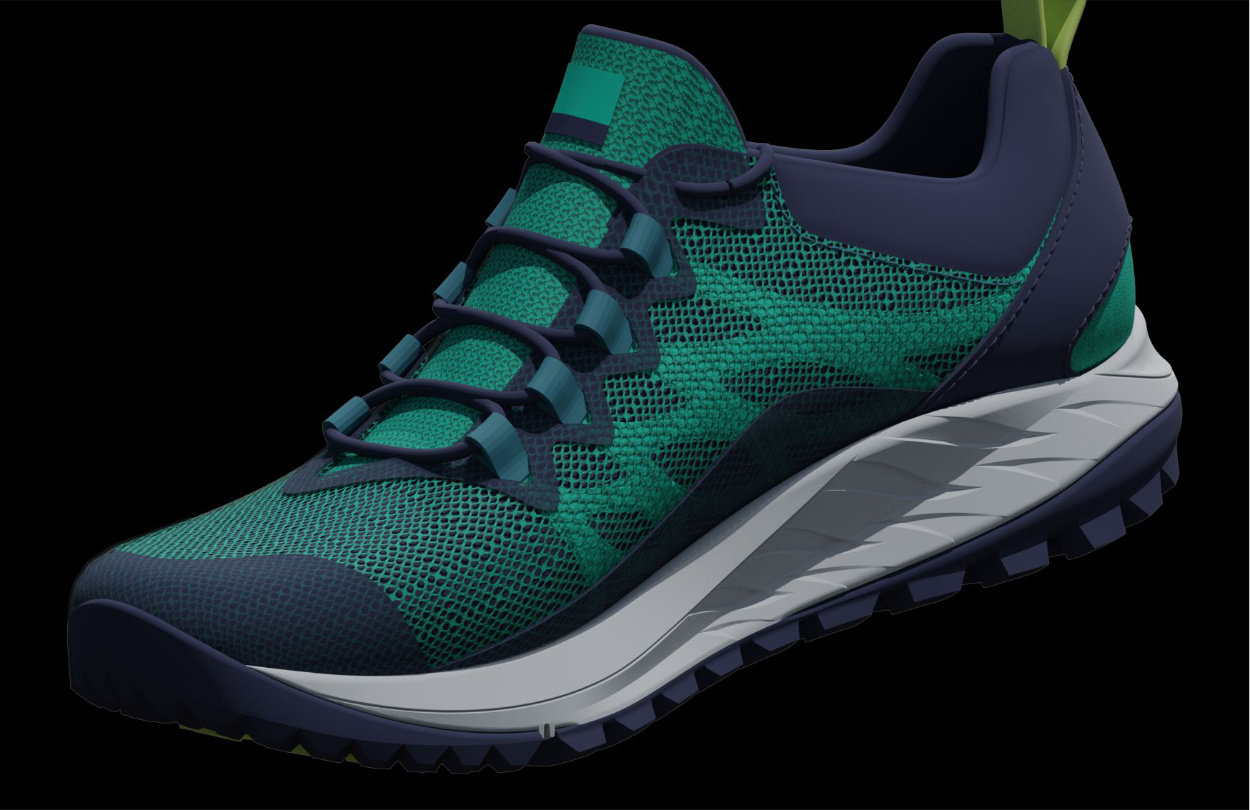Key Takeaways:
- Investment into DPC tools and talents will be critical to ensure success for footwear and leather goods companies in 2024. I’m doing so, fashion companies can drive innovation, enhance productivity, and reduce time-to-market; ultimately ensuring competitiveness and sustainable growth in the modern business landscape.
- Adopting digital twins is the spine of a complete collaborative way of working and represents a significant shift in how the footwear/leather goods industry approaches the product development process.
- Full 3D and DPC adoption requires effort from all stakeholders. Successful implementation will rely on the alignment of technology, collaboration, communication, and integration sustainability.
What do you believe are the greatest opportunities that are realistically achievable, in 2024, through investment in DPC talent and tools?
In today’s competitive business environment, staying ahead of the curve and achieving sustainable growth is a formidable challenge. One of the most effective ways to meet this challenge is through strategic investment in tools and talents.
I believe opportunities arise when companies in footwear and leather goods invest in nurturing their product development capabilities, as well as the talented individuals and cutting-edge tools that drive innovation.
Innovation is the lifeblood of any successful business. Investing in state-of-the-art tools and technology empowers product development teams to enhance their productivity. DPC tools such as the Romans CAD / PDM 360° digital platform (covering 3D modeling, 2D patterns, material consumption, material & components library, sustainable BOM, SKU management, pre-costing, etc.) provide the means to prototype and validate products faster and more accurately. All these steps must be undertaken before producing the 1st prototype. Only with this method, a brand will be able to reduce the time to market. The engineering of the product must be moved back at the brand design level.
The CAD-PDM integration proposed by Romans CAD©™ allows design teams to work more efficiently, no matter where they are located. By having all the digital product information very early in the process, Romans CAD©™ allows for quicker decision-making, real-time feedback, and simultaneous work on different aspects of product development, ultimately expediting the time to market.

In conclusion, it is obvious that investment in DPC is a strategic imperative for footwear and leather goods companies seeking to thrive in the modern business landscape. It fosters innovation, improves product quality, reduces time-to-market, enhances cost efficiency, and ensures competitiveness. Companies that make these investments now will not only meet the needs of their customers more effectively but also secure their future growth, and margins and abide by the upcoming sustainability rules.
How do you define a “digital twin”? It’s a term that’s used a lot in 3D / DPC circles, but it’s one that has a very loose definition. And what does it mean, in your opinion, to adopt a digital twin as the foundation of a different, more collaborative way of working?
A digital twin can be defined as a virtual, 3D data-driven representation of a physical shoe/bag or any other product, encompassing every intricate detail (design, sizes, materials, manufacturing processes). It is a digital replica that mirrors the real-world product in every aspect offering a lifelike rendering of the product.
The 3D digital twin embeds the global information belonging to the product (geometry, measurements, materials properties, testing, etc.) and their meta-data (ex: supplier, price, Higgs/sustainability indexes, production centres, country of sales, duties, etc.). It provides insights into the manufacturing process (parts, components, operations, stitching, cutting, etc.).
Adopting a digital twin is the spine of a complete collaborative way of working and represents a significant shift in how the footwear/leather goods industry approaches the product development process. In my opinion, this approach signifies several key principles and advantages:
Collaboration: First, the digital twins provide a shared platform where all stakeholders, from designers to manufacturers to marketing and commercial teams, collaborate in real-time. This level of transparency and immediate communication fosters a more cohesive and integrated approach to product development. Then, the footwear/leather goods industry is globally distributed, with different aspects of production occurring in various locations and generally working in asynchronous mode. A shared digital twin enables geographically dispersed teams to work together seamlessly (synchronous mode) and collaborate on the same up-to-date model. Finally, a digital twin acts as a common language (based on a unique data set) that everyone involved in the product production process understands. It optimizes communication (in terms of quality and data quickly available), reduces misunderstandings, and enhances productivity.

Iterative Design and feedback: The digital twin allows for continuous design iterations. Designers can work on the 3D, make changes, and instantly share those with the entire team (2D pattern, consumption of materials, costing, etc.). This iterative process encourages feedback and creative input from various parties, leading to better, more refined designs.
Reduced Physical Prototyping: Based on a validated digital twin, the production of the 1st prototype corresponds exactly to what the design studio have created. Consequently, the number of physical prototypes is significantly reduced. This not only saves time and money but also minimizes the environmental impact associated with creating physical samples. It also helps control the product follows new sustainability regulations.
Customization and Personalization: The digital twin facilitates the creation of customized product options. Designers can work closely with marketing and sales teams to meet market trends through SMUs. This collaborative approach fosters brand loyalty and customer satisfaction.
Productivity and Cost Savings: By reducing the number of physical prototypes, streamlining the design process, and minimizing errors, adopting a digital twin can lead to significant cost savings and improved operational efficiency in the footwear/leather goods industry. In addition, since the digital twin comprises all the data related to the model, one can easily replace a material by another for cost purposes.
Adaptability and Innovation: With the ability to experiment within the digital twin environment, the footwear/leather goods industry can explore
innovative designs, materials, and sustainability initiatives more easily. This adaptability is crucial in an industry that is continuously evolving to meet market demands.
In conclusion, adopting a digital twin fosters a dynamic and collaborative environment where creativity and data-driven decision-making coexist, ultimately leading to a more efficient, sustainable, and customer-centric footwear/leather goods development.
For the footwear industry, the closer link between design and engineering creates a unique demand for bringing together 3D, 2D, and product data into a cohesive whole – where the digital asset serves as both the product definition and as a tool for visualization. Why do you believe that unified approach is the right one, and how does it differ from the preconceived ideas our readers might already have about how 3D and PLM / PDM interoperate?
The native integration of 3D/2D/Cut and PDM into a single digital platform creates a unified product development environment that streamlines workflows and enhances 3D design/data in a synchronous mode. Romans CAD©™ 360° digital platform promotes a data-driven approach to product development, ensuring that changes made in the design phase are instantly reflected
in both 3D/2D representations and PDM. This suppresses errors and discrepancies at the end. Indeed, today, most companies still work in an asynchronous mode where each time they modify the 3D or 2D, they must go through every step of the process to manually update and then input the updated data in the PLM/ERP.

Romans CAD©™ seamlessly combines 3D modeling, 2D pattern design, consumption of materials, tech pack, and PDM functions into a single platform ready to use. This streamlined workflow reduces time spent on manual data editing and suppresses errors that can occur when using disparate software tools.
Stratégies Romans CAD©™ provides an API that allows for seamless communication and data transfers between the PDM and the chosen PLM/ERP system. The PDM – ERP/ PLM integration is a game-changer for footwear companies helping them to manage the entire product lifecycle efficiently and accelerate time to market.
One of the most significant advantages of integrating our PDM with a PLM is the automation of various tasks. The synchronization of data such as product specifications, materials, design changes, and reports (BOMs) is automatically made between PDM and PLM. This eliminates manual data input to PLM, reducing errors and saving time.
In footwear – especially where new platforms new R&D, and new tooling are required – the time it takes to bring a new product to market can be extremely long. How do you aim to help your customers reduce time to market? And what other benefits does that bring?
The role of the Romans CAD/PDM digital platform is pivotal in enabling footwear companies to expedite their product development cycles and remain agile in response to evolving consumer trends. Through this workflow, the digital twin and its Tech Pack can be shared with all stakeholders for validation before producing any prototype.
To facilitate access to the digital twin by non-CAD users, a BtoB application, Showcase, is integrated within the platform to allow them to be involved in the product validation process. They are also able to create SMUs and pre-orders.
Another worksite of the R&D department is accelerating automation and AI-powered features within 3D/2D/SL – this significantly reduces manual effort and speeds up the design process. Tasks such as pattern making and material calculations are automated, saving valuable time.
What role do you see 3D and DPC-ecosystem tools and processes playing in enabling brands to measure and manage the environmental impact of their products and collections? And how will that factor into their ability to comply with existing and upcoming sustainability regulations?
3D and DPC constitute the spine of the data collection plan everyone will need to meet the upcoming sustainability regulations. Evaluation of your carbon footprint starts right from the first design, as mentioned by the FDRA in its latest call to the industry when discussing the regulations coming up in the US and Europe. Traditional product design and development involve creating numerous physical prototypes before agreeing on the final one, which implies a substantial waste of materials.
So, I am convinced that 3D Digital Twins and Digital Product Creation are essential tools since they help reduce waste and improve material efficiency, optimize supply, and retail chains, and enable sustainable decision-making throughout the product lifecycle.

How would you describe the ideal 3D / DPC pipeline – category-specific or generalized – and what barriers are currently preventing it from being built and widely adopted? What pieces still need to be put in place for fashion to stand the best chance of achieving what you define as the full-scale vision for DPC?
The ideal 3D/Digital Product Development pipeline should start at the brand level with the design, tech pack, and validation processes, all happening at the 3D level before moving to the 2D and manufacturing.
The adoption of 3D and DPC in the footwear/ leather goods industries is growing, but several barriers still exist.
Resistance to Change: Employees and stakeholders may be resistant to changing from traditional design and prototype production. Convincing them to embrace digital processes can be a challenge. An important support is mandatory to succeed.
Costs of DPC solution: Generally speaking, companies consider DPC projects as costly. Very few are aware of the real cost needed to develop their own collection. The consequence is that they are not able to correctly assess the DPC’s ROI. When calculated properly, the ROI is by far positive in the following 2 years for the companies.
Integration with Existing IT Systems: Transitioning to 3D and DPC may require integrating them with existing PLM/ERP, etc., which can disrupt established workflows. That’s when our API comes into play. There is no need for manual input from one system to the other anymore!
Market Competition: Companies may be hesitant to adopt 3D and DPC if they perceive that their competitors are not using these technologies, leading to a “wait-and-see” approach. However, we are witnessing a change in the market, reinforced by upcoming sustainability regulations. Brands that have implemented a comprehensive digital twin and data collection plan will be better prepared and will also enjoy an increase in productivity, reliability, and profitability as it is already the case with many of our clients.
Adopting the 3D and DPC at full scale in the footwear industry requires a concerted effort from all stakeholders. Successful implementation of DPC will rely on the alignment of technology, collaboration, communication, and integration sustainability.
It is a corporate issue, not a department issue. The challenges are the same in Leather Goods.
